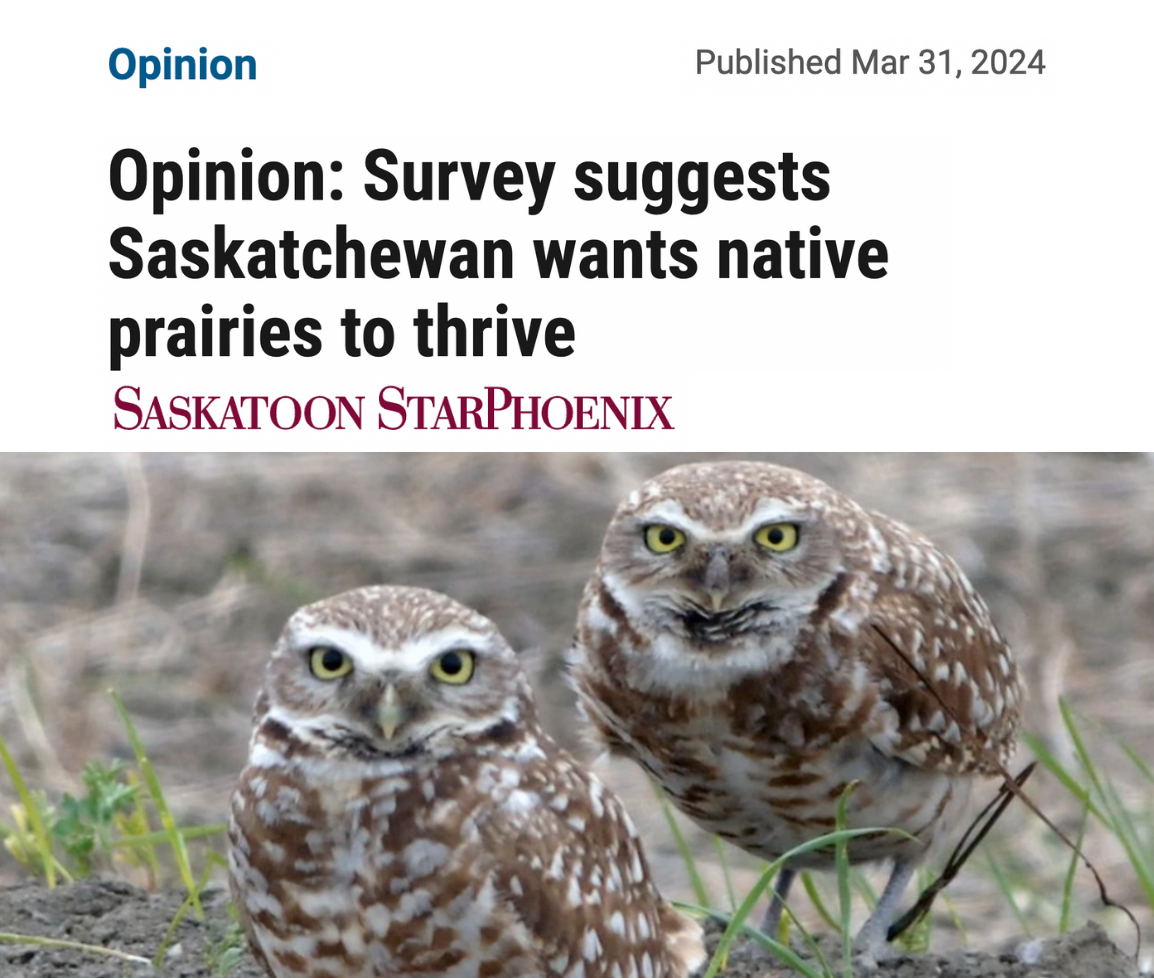Survey Suggests Saskatchewan Wants Native Prairies to Thrive

The following opinion article was published on March 31 in The Star Phoenix. The article features survey results from rural and urban voters who agree that native prairie and grassland conservation is a priority.
Saskatchewan voters have a clear message for the province: we want our families to enjoy a thriving prairie landscape for generations to come.
At Canadian Parks and Wilderness Society, Saskatchewan Chapter we recently conducted a provincewide survey of more than a thousand residents from rural areas, small towns and urban centres.
The online survey of people recruited by Capulet of 1,064 people in Saskatchewan over the age of 16 was conducted to ensure respondents were spread evenly across geographical and age demographics to be representative of opinion across the province. The survey’s margin of error is 3.14 per cent, with a confidence level of 96 per cent.
No matter the geography, we agree that the government needs to do more to protect Saskatchewan’s native prairie.
But the province continues to stall on effective grassland protection and policy measures. In the 1990s, Saskatchewan committed to protecting 12 per cent of the province’s land and inland waters. Thirty years on, that promise is still unfulfilled, with only nine per cent of nature protected.
This doesn’t sit well with the 89 per cent of survey takers who want Saskatchewan to hit its protection commitment, and the 78 per cent who want the government to exceed the outdated 12 per cent protection target.
So what kinds of grassland protection and management improvements do Saskatchewanians want to see? The survey says we want the provincial government to show they’re serious about protection and effective management, and to acknowledge how important grassland ecosystems are in addressing climate change and biodiversity loss.
Ninety per cent of survey respondents agreed or strongly agreed that protecting wildlife, conserving grasslands and key wetlands, and ensuring a thriving and biodiverse prairie landscape for future generations should be a top priority.
We know nature protection is a successful way to address climate change and biodiversity loss — the Prairie Pastures Conservation Area in southwestern Saskatchewan is a good example. But, there are other mechanisms that survey takers support, too.
They resoundingly support the need to address benefits like tax breaks and subsidies, and autonomy to landowners/tenants for protecting and effectively managing native prairie on their land.
There’s also strong agreement that the government shouldn’t be allowed to unduly drain or remove wetlands on Crown land without a proper assessment that includes the value of wetlands to climate and biodiversity matrixes.
As the interim executive director at the Canadian Parks and Wilderness Society, Saskatchewan Chapter, I know we can and should be doing more to raise the profile of grassland conservation.
That includes where advances are being made and where great examples of work in action exist — the ranching community, for example.
But we also need to raise concerns in places where this ecosystem is subject to negative impacts and ongoing fragmentation, degradation and loss.
This is especially clear in our survey responses, with 55 per cent of people believing there are fewer than 20 at-risk species currently in Saskatchewan’s grasslands, many of which are iconic to the prairie landscape: burrowing owl, swift fox, greater-sage grouse, loggerhead shrike, to name a few.
The number of at-risk species is well beyond this number, as grasslands continue to be negatively impacted by provincial government policy and ongoing fragmentation, degradation, and loss of large, contiguous and healthy or restorable native prairie.
As we get closer to an election, it’s clear that nature is a vote winner in the province. It would be a wise move for Saskatchewan’s government to finally show they’re serious about protecting it.
Stewart Coles is the interim executive director at the Canadian Parks and Wilderness Society, Saskatchewan Chapter, a nature conservation charity.
Read this article on The Star Phoenix and join the discussion.
